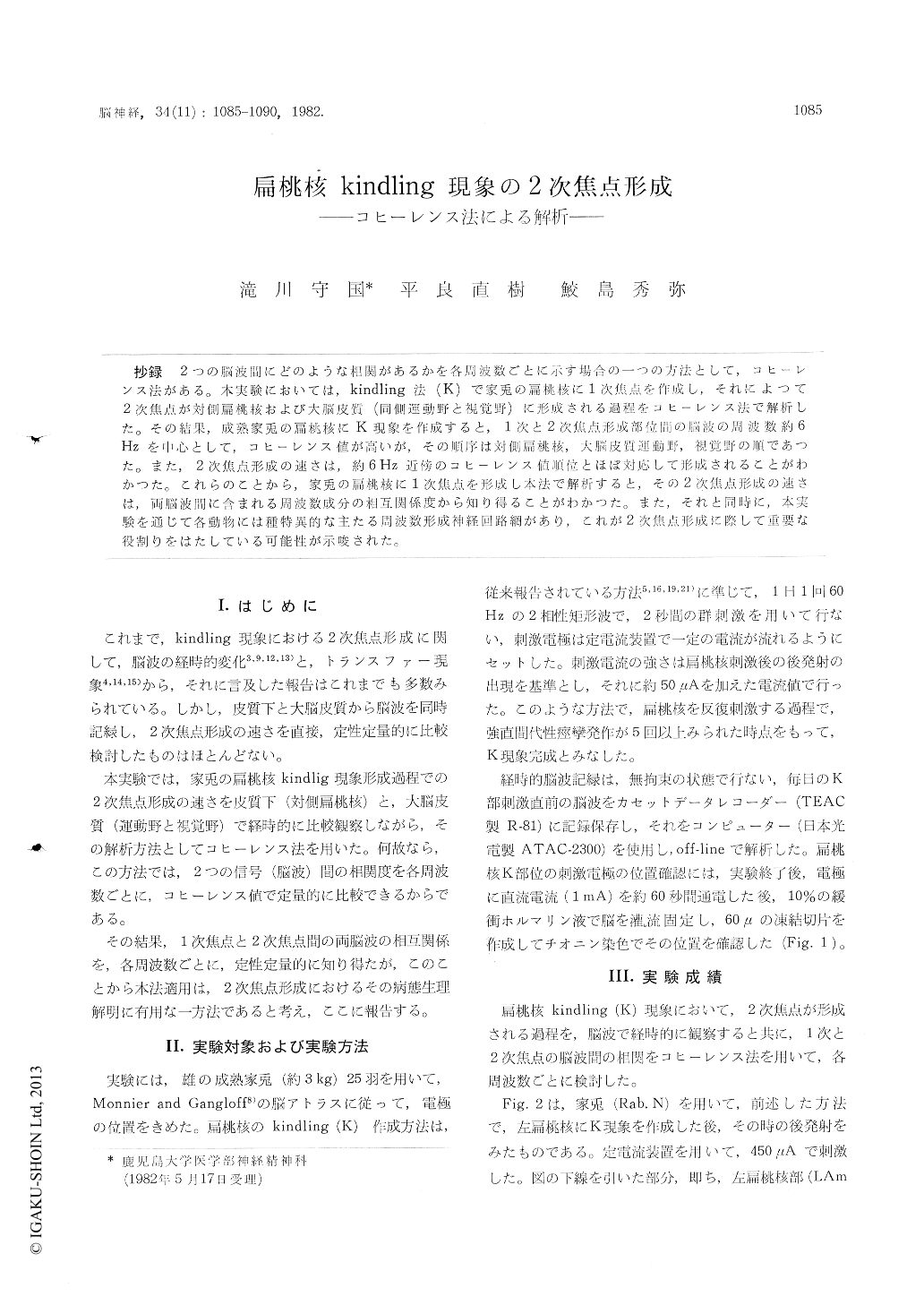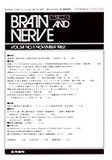Japanese
English
- 有料閲覧
- Abstract 文献概要
- 1ページ目 Look Inside
抄録 2つの脳波間にどのような相関があるかを各周波数ごとに示す場合の一つの方法として,コヒーレンス法がある。本実験においては,kindling法(K)で家兎の扁桃核に1次焦点を作成し,それによつて2次焦点が対側扁桃核および大脳皮質(同側運動野と視覚野)に形成される過程をコヒーレンス法で解析した。その結果,成熟家兎の扁桃核にK現象を作成すると,1次と2次焦点形成部位間の脳波の周波数約6Hzを中心として,コヒーレンス値が高いが,その順序は対側扁桃核,大脳皮質運動野,視覚野の順であつた。また,2次焦点形成の速さは,約6Hz近傍のコヒーレンス値順位とほぼ対応して形成されることがわかつた。これらのことから,家兎の扁桃核に1次焦点を形成し本法で解析すると,その2次焦点形成の速さは,両脳波間に含まれる周波数成分の相互関係度から知り得ることがわかつた。また,それと同時に,本実験を通じて各動物には種特異的な主たる周波数形成神経同路網があり,これが2次焦点形成に際して重要な役割りをはたしている可能性が示唆された。
Formation of the secondary focus in the rabbit amygdala Kindling (K) phenomenon was analysed by the coherence method. This method is capable of showing the degree of correlation between two signals (EEG) at each frequency. Mature male ra-bbits were used and a train stimulation using a biphasic square wave of 60 Hz was applied to the amygdala for two second once a day until the completion of K-phenomenon.
The results obtained were as follows.
1 ) The coherence values between the amygda-loid K-region and opposite amygdala were usually much higher than those of the cerebral cortex (motor and optic areas) with a frequency of 6 to 7 Hz before and after completion of the K-pheno-menon.
2) The speed of the secondary focus formation was observed to be parallel with the coherence value.
3) The secondary focus formation induced by the K of amygdala in a rabbit has much to do with the 6 Hz nerve circuit which links between the primary focus and secondary focus. That is, if the coherence value appears high around 6 Hz, the secondary focus is easily formed in case of a rabbit.
4) Application of this method enabled us to see the degree of functional correlation between the primary focus and secondary focus at each frequ-ency. With all these, it is suggested that the theta frequency ranges of power spectra between above region play a vital role in producing secondary focus formation of the amygdaloid Kindling in rabbits.

Copyright © 1982, Igaku-Shoin Ltd. All rights reserved.


